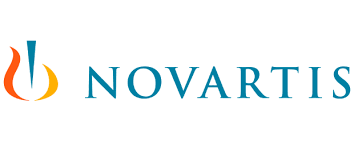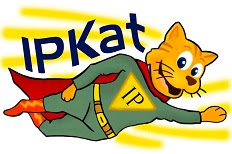Compulsory licence and parallel import: what is happening in Latin America?
A trend or a right? These are the two sides that we can hear when a government is negotiating or authorizing a compulsory licence or parallel import. But very plainly we could see that some of the Latin American countries are using TRIPS flexibilities in their own favour [wasn’t this the aim?].
Article 31 TRIPS recognizes the right of countries to grant compulsory licences for patented medicines in order to combat illnesses. Moreover, the Doha Declaration on TRIPS and public health, states that each WTO member state "has the right to grant compulsory licences and the freedom to determine the bases upon which such licences may be granted".
Brazil
Back in 2007 this blog was reporting the news that the Brazilian government tried to reach an agreement with MERCK SHARP & DOME, for the antiretroviral EFAVIRENZ proposing the payment of a price comparable to the one it has in Thailand, i.e., US$ 0,65 per pill, instead of paying US$ 1,59 per each pill. As there was no a satisfactory outcome, the Brazilian government published the Decree no. 6,108 noting the compulsorily licence of EFAVIRENZ on the grounds of public interest principle. This licence was destined only to the public and non-commercial use of the drug, and aimed to attend local HIV/AIDS Program. The time frame of the licence was set to be 5 years.
 EFAVIRENZ would be manufactured by laboratories of governmental institutions but this was going to be at the end of 2008 and in the meantime Brazil was to import a generic version of EFAVIRENZ from India, to supply the internal need.
EFAVIRENZ would be manufactured by laboratories of governmental institutions but this was going to be at the end of 2008 and in the meantime Brazil was to import a generic version of EFAVIRENZ from India, to supply the internal need.
At the end of 2015 we heard from one of our Brazilian friends that Politicians were getting ready to vote for new Pharma Laws. If the law were to pass, the country’s generic industry was to certainly benefit from it. One of the proposal was to expand the grounds of Government non-commercial use of patents and patent applications on the basis of public interest.
Ecuador
 By the end of 2009 the Ecuadorian government created public pharmaceutical and Drug Company called ENFARMA PA (executive Decree (No 181)). Decree 118 was also passed declaring that it was in the public interest to have access to medicines used for the treatment of illnesses affecting the Ecuadorian people.
By the end of 2009 the Ecuadorian government created public pharmaceutical and Drug Company called ENFARMA PA (executive Decree (No 181)). Decree 118 was also passed declaring that it was in the public interest to have access to medicines used for the treatment of illnesses affecting the Ecuadorian people.
In 2014 we noted that Ecuadorian Intellectual Property Institute (IEPI) had received 32 applications for compulsory patent licences. Some of which were refused or abandoned, but nine resulted in the grant of licences for the production of drugs such as Ritonavir, Lamivudine and Abacavir. In the Ritovanir case, which was the first compulsory licence granted in the country, the licence was to be run until the expiry date of the patent i.e. 30 November 2014. ENFARMA PA had applied for the compulsory licences for 9 cases.
Colombia
In 2010 we were made aware of Colombia's position. It seemed to prevent parallel imports of pharmaceutical unless they were listed in the ‘Compulsory Health Plan’. However, it was making it possible to allow the importation of medicines without permission from the manufacturers which were in the Compulsory Health Plan. The Colombia’s Government announced that the list aims was to get medicines at lower prices. For instance it recalled that Products Roche SA was already offering to reduce the prices of nine of its medicines. Therefore, the Ministry of Health excluded these nine drugs from the list of subject of parallel imports, but the Ministry left the door open to come to this facility if the prices increased again.
 2016 and we received the information that for several weeks, the Colombian Health Minister Mr Alejandro Gaviria had tried to find a way to force Novartis to lower the price for its leukemia treatment drug Gleevec (due to expire in 2018). [Back in 2010 Laboratory Novartis was hearing a case in a Latin American court in regards to the same drug. The case was decided by the Supreme Court in Brazil and it was regarding extending for almost a year the patented drug through the pipeline system. (for more information see post here)]. Mr Gaviria, failing to negotiate with Novartis, has decided unilaterally to “lower the price the government will pay for the medicine.” …we need to rewind in here…why such an unusual and controversial measure?
2016 and we received the information that for several weeks, the Colombian Health Minister Mr Alejandro Gaviria had tried to find a way to force Novartis to lower the price for its leukemia treatment drug Gleevec (due to expire in 2018). [Back in 2010 Laboratory Novartis was hearing a case in a Latin American court in regards to the same drug. The case was decided by the Supreme Court in Brazil and it was regarding extending for almost a year the patented drug through the pipeline system. (for more information see post here)]. Mr Gaviria, failing to negotiate with Novartis, has decided unilaterally to “lower the price the government will pay for the medicine.” …we need to rewind in here…why such an unusual and controversial measure?
It appears, as my teenagers daughters would say, the Minister of Health ‘got a beef’ with Novartis. In 2012, the patent registration of Gleevec was denied but Novartis successfully went to court and a patent was granted. This meant that generic versions could not be produced. In 2015, Novartis sent a letter to the Minister of Health warning that any trace of Gleevec that appears in a generic would be considered a patent infringement.
This issue has brought many into this debate. For instance both the US Senate Finance Committee and the US Trade Representative’s office met with Colombian embassy officials and suggested that Washington might withdraw support for bringing Colombia into the Trans-Pacific Partnership, as well as removing monetary support in backing for the peace initiative between the Colombian government and Marxist rebels.
Novartis in a statement noted that while they support the Declarations of Public Interest which is a legitimate tool, it ought to be used in exceptional circumstances and it considered that it was not the case of Colombia. Novartis further elaborating saying that there were no shortages of Gleevec and that it does not have a monopoly. Something that caught my attention from the statement is that Novartis says that “There are already noninfringing generic versions on the market, which the government could purchase instead of Gleevec in order to reduce its costs.” The question is: how can it be a generic drug that does not infringe? Generic drugs are identical--or bioequivalent--to a brand name. However, the news stated that there are two forms or versions of the drug, one of which is available as a generic (no Gleevec’s version of course). Novartis then insisted that Colombia can have access to the generic version.

As it is usual when IP rights crosses or is in the border line with human rights, the task of setting the right balance keeps us debating. Indeed a heated discussion will follow in cases of drugs, genetic resources, and traditional knowledge and even in cases of geographical indications.
While TRIPS and the Doha Declaration and public health, permits WTO member the right to grant compulsory licences and the freedom to determine such ‘flexibility’, I think this news is a first…don’t have a compulsory licence, just unilaterally lower the price!
Article 31 TRIPS recognizes the right of countries to grant compulsory licences for patented medicines in order to combat illnesses. Moreover, the Doha Declaration on TRIPS and public health, states that each WTO member state "has the right to grant compulsory licences and the freedom to determine the bases upon which such licences may be granted".
Brazil
Back in 2007 this blog was reporting the news that the Brazilian government tried to reach an agreement with MERCK SHARP & DOME, for the antiretroviral EFAVIRENZ proposing the payment of a price comparable to the one it has in Thailand, i.e., US$ 0,65 per pill, instead of paying US$ 1,59 per each pill. As there was no a satisfactory outcome, the Brazilian government published the Decree no. 6,108 noting the compulsorily licence of EFAVIRENZ on the grounds of public interest principle. This licence was destined only to the public and non-commercial use of the drug, and aimed to attend local HIV/AIDS Program. The time frame of the licence was set to be 5 years.
At the end of 2015 we heard from one of our Brazilian friends that Politicians were getting ready to vote for new Pharma Laws. If the law were to pass, the country’s generic industry was to certainly benefit from it. One of the proposal was to expand the grounds of Government non-commercial use of patents and patent applications on the basis of public interest.
Ecuador
In 2014 we noted that Ecuadorian Intellectual Property Institute (IEPI) had received 32 applications for compulsory patent licences. Some of which were refused or abandoned, but nine resulted in the grant of licences for the production of drugs such as Ritonavir, Lamivudine and Abacavir. In the Ritovanir case, which was the first compulsory licence granted in the country, the licence was to be run until the expiry date of the patent i.e. 30 November 2014. ENFARMA PA had applied for the compulsory licences for 9 cases.
Colombia
In 2010 we were made aware of Colombia's position. It seemed to prevent parallel imports of pharmaceutical unless they were listed in the ‘Compulsory Health Plan’. However, it was making it possible to allow the importation of medicines without permission from the manufacturers which were in the Compulsory Health Plan. The Colombia’s Government announced that the list aims was to get medicines at lower prices. For instance it recalled that Products Roche SA was already offering to reduce the prices of nine of its medicines. Therefore, the Ministry of Health excluded these nine drugs from the list of subject of parallel imports, but the Ministry left the door open to come to this facility if the prices increased again.
It appears, as my teenagers daughters would say, the Minister of Health ‘got a beef’ with Novartis. In 2012, the patent registration of Gleevec was denied but Novartis successfully went to court and a patent was granted. This meant that generic versions could not be produced. In 2015, Novartis sent a letter to the Minister of Health warning that any trace of Gleevec that appears in a generic would be considered a patent infringement.
This issue has brought many into this debate. For instance both the US Senate Finance Committee and the US Trade Representative’s office met with Colombian embassy officials and suggested that Washington might withdraw support for bringing Colombia into the Trans-Pacific Partnership, as well as removing monetary support in backing for the peace initiative between the Colombian government and Marxist rebels.
Novartis in a statement noted that while they support the Declarations of Public Interest which is a legitimate tool, it ought to be used in exceptional circumstances and it considered that it was not the case of Colombia. Novartis further elaborating saying that there were no shortages of Gleevec and that it does not have a monopoly. Something that caught my attention from the statement is that Novartis says that “There are already noninfringing generic versions on the market, which the government could purchase instead of Gleevec in order to reduce its costs.” The question is: how can it be a generic drug that does not infringe? Generic drugs are identical--or bioequivalent--to a brand name. However, the news stated that there are two forms or versions of the drug, one of which is available as a generic (no Gleevec’s version of course). Novartis then insisted that Colombia can have access to the generic version.
As it is usual when IP rights crosses or is in the border line with human rights, the task of setting the right balance keeps us debating. Indeed a heated discussion will follow in cases of drugs, genetic resources, and traditional knowledge and even in cases of geographical indications.
While TRIPS and the Doha Declaration and public health, permits WTO member the right to grant compulsory licences and the freedom to determine such ‘flexibility’, I think this news is a first…don’t have a compulsory licence, just unilaterally lower the price!











